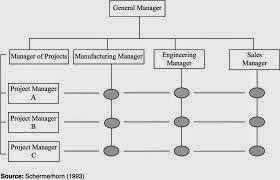FUNDS FLOW STATEMENT Vs CASH FLOW STATEMENT
Funds
flow statement Vs Cash flow statement
The differences are as follows:
Funds flow statement
|
Cash flow statement
|
1.
It is based on accrual accounting system.
|
1.
While preparation of this statement, all transaction effecting the cash and
cash equivalents are taken into consideration.
|
2.
It analysis the sources and application of funds of long-term nature and net
increase or decrease in long term funds will be reflected on working capital
of the firm,
|
2.
It considers only the increase or decrease in current assets and current
liabilities in calculating the cash flow from operations.
|
3.
More useful in long range planning.
|
3.
More useful for identifying and correcting the current liquidity problems of
the firm.
|
4.Sound
fund position does not necessarily mean sound cash operation
|
4.
Sound cash operation is always followed by sound fund position.
|
5.
It shows the funds generated and applied as regards long term assets long
term liabilities and capital.
|
5.
It shows the cash flow from operating, financing and investing activities.
|
6.
The changes in current items are adjusted in the statement of the changes in
working capital.
|
6.
In this statement cash from operations are calculated after adjusting the
increase or decrease in current liabilities and assets to operating profit
before working capital changes.
|
Key
terms to remember in cash flow statement:
1. Cash
flow statement: It provides information about the cash
receipt and cash payments of an enterprise for a given period by providing
information about changes in cash and cash equivalents.
2. Cash
:It comprises of cash in hand and demand deposit with bank
3. Cash
equivalents: These are short term and highly liquid
investments that are readily converted into cash .Eg: commercial paper and
treasury bills.
4. Cash
flow: It means the movement of cash into and out of the
organization and the difference is either net cash inflow or outflow.
5. Operating
activities: These are the principal revenue
producing activities of the enterprise. These transactions and events will be
taken into consideration of net profit or loss.
6. Investing
activities: These activities relate to the
acquisition and disposal of long term assets.
7. Financing
activities: These activities result in changes in
the size and composition of the owner’s capital and borrowing of the
organization.
8. Non
cash transaction: Such activities which does not require
cash eg investing and financing activities.
9. Direct
method: Cash
receipt from operating revenues and cash payments for operating expenses are
rearranged so as to get cash flow from operating activities.
10. Indirect
method: Net profit is taken as a base and adjusts it to
arrive at cash flow from operating activities.



Comments